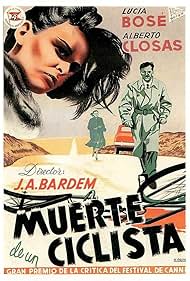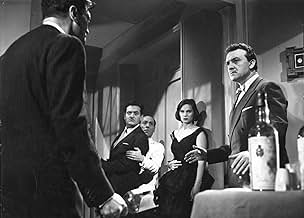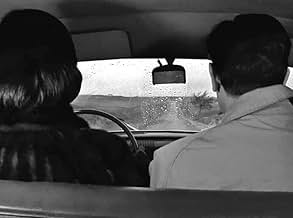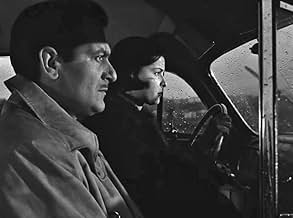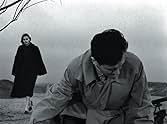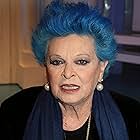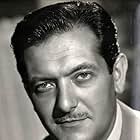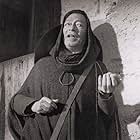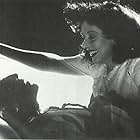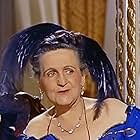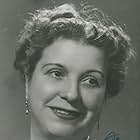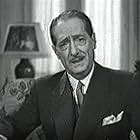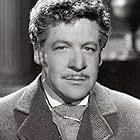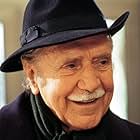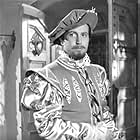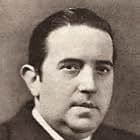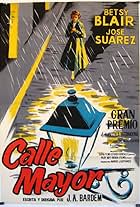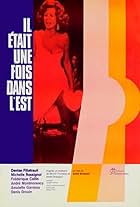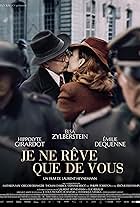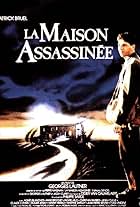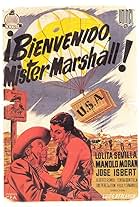A couple having an affair strike a bicyclist with their car and do not offer aid out of fear of their relationship being exposed.A couple having an affair strike a bicyclist with their car and do not offer aid out of fear of their relationship being exposed.A couple having an affair strike a bicyclist with their car and do not offer aid out of fear of their relationship being exposed.
- Awards
- 2 wins
- María José de Castro
- (as Lucia Bose)
- Matilde Luque Carvajal
- (as Bruna Corra)
- Comisario
- (as Jose Sepulveda)
- Decano
- (as Jose Prada)
- Padre Iturrioz
- (as Manuel Arbo)
- Nico
- (as Rufino Ingles)
- Director
- Writers
- All cast & crew
- Production, box office & more at IMDbPro
Storyline
Did you know
- TriviaLucia Bose was an Italian actress who did not speak fluent Spanish. For this film, all of her dialogue was dubbed by another actress.
- GoofsA cameraman's hand is visible in the back seat when Maria Jose is alone in the car towards the end.
- Quotes
Miguel Castro: The other day, someone told me a very interesting story. The story of a happy marriage that went downhill.
María José de Castro: Why?
Miguel Castro: The woman tricked the man.
María José de Castro: Oh really? How original.
Miguel Castro: Let me finish. The woman tricked the man. They were both good people, especially the woman. And he had a lot of money.
María José de Castro: So what did the husband do, kill his wife?
Miguel Castro: No, even better. He left her. Without a penny, suddenly she lost her entire life. Even everyday life, lost. And nobody wanted to give her a hand. Do you like it?
María José de Castro: The story? It's not too bad. Who told it to you?
Miguel Castro: Rafa.
- ConnectionsFeatured in Cuando Franco murió, yo tenía 30 años (2005)
Juan Antonio Bardem's Muerte de un ciclista (Death of a Cyclist)
The Formation of a Unique Hybrid of Spanish Cinema
1955. At the height of the cold war, almost twenty years under the Franco regime, Spain, a country fiercely divided by poverty and societal division prepares with the support of the United States, to enter into the United Nations. American investors arrive in Spain for the chance to buy into the developing Spanish economy. Meanwhile on a cold winter's day, dusk is falling and the Sun's dying rays hit the highway. Enrique Arízaga cycles past and off into the outlying horizon. Almost as soon as he has gone out of sight, a screeching of brakes is heard in the distance and a black car slams to a halt around the bend; the cricket chirps. A man jumps out and rushes over. On observing the cyclist is still breathing, he calls over to the woman, inside the car. She gets out and calls back over to him. The woman beckons him again to desert the scene of the accident, leaving the cyclist to die. The car moves off again disappearing towards Madrid.
In the immediacy of its establishing sequence, Juan Antonio Bardem's Muerte de un ciclista (Death of a Cyclist) already outlines the foundations and circumstances behind the film's plot. An adulterous couple, Juan (Alberto Closas) and María José (Lucia Bosè) run down a cyclist on their way back to Madrid after a clandestine meeting in the outskirts. Rather than call for help the couple, fearful of the discovery of their adulterous relationship, flee the scene of the accident. Bardem's film focuses on the tribulations and strains on the characters' relationship from that point onwards and the lengths they go to keep their crimes of adultery and murder under cover.
Spanish director Juan Antonio Bardem (1922-2002) explored and made use of a variety of genres within his early career. In Esa pareja feliz (1951) and ¡Bienvenido Mr Marshall! (1953), both joint ventures with contemporary Luis García Berlanga, Bardem through the conventions of comedy was able to develop a structure of parody and political satire. In Cómicos (1954), Bardem was heavily influenced by the genre of Hollywood melodrama, in particular that of films such as All About Eve (1950), a convention he would continue to develop throughout later films including Calle Mayor (1956).
Throughout Muerte de un ciclista Bardem develops a compound of contrasting style and genre to represent key issues within Spanish society. Prominent themes and genres within the film include film noir and the femme fatale mould, the Hitchcock suspense thriller, Italian neo-realism and soviet montage. Bardem uses these contrasting elements directly after one another in order to create what Marsha Kinder refers to as a 'rupture' within the centrality of the plot of the Hollywood melodrama. In the same way as the unnatural cutting and contrasting imagery Bardem uses, the film is able to ideologically expose corrupt and immoral elements of the Franco regime. The focus of this essay is to explore and to investigate these various elements and analyse the way in which they come together in forming a hybrid that is unique within the history of Spanish cinema.
Through the usage of a variety of contrasting elements and genre Bardem is able to ideologically expose the corrupt elements of the Franco regime. Today Muerte de un ciclista stands as a critique of the conformist values that it ridicules and attempts to tear apart. It breaks all the rules and shows the power of cinema to revolutionise daily life. In the same way as Bardem's characters of María José who breaks the conformist gender rules of Francoist Spain, Matilde who rebels against the institutional system and Juan who goes against the corruption and falseness of his class background, so too does Muerte de un ciclista rebel both by taking a stand against the corrupt Franco regime and also by breaking the rules of mainstream conventional cinema in order to present something vitally fresh and unique in Spanish film. Alfred Hitchcock once noted that it is important to know the limits of commercial cinema. Bardem is able to successfully use a clash of genre to stretch the viewer close to an absolute limit and is subsequently able to breakdown and underline the key political issues surrounding contemporary Spanish society. In the same way as the moral courage that the character of Juan is able to attain, Bardem seeks to signify the same moral fibre that the Spanish regime strove to repress. Like the broken window imagery that Bardem puts forward towards the end of the film, so too does a hole within the melodramatic centrality serve as a central element within the film's plot in order to be clashed with and torn apart. It is through this hybrid and "rupture" of genre that Juan Antonio Bardem's Muerte de un ciclista has been able to create a quintessential feat in Spanish cinema.
Harrison Cohen
"What need we fear who knows it, when none can call our power to account?" Lady Macbeth
- harrisoncohen
- Jan 8, 2008
- Permalink
- How long is Death of a Cyclist?Powered by Alexa
Details
- Release date
- Countries of origin
- Official site
- Languages
- Also known as
- Age of Infidelity
- Filming locations
- Production companies
- See more company credits at IMDbPro
- Runtime1 hour 28 minutes
- Color
- Aspect ratio
- 1.37 : 1
Contribute to this page

